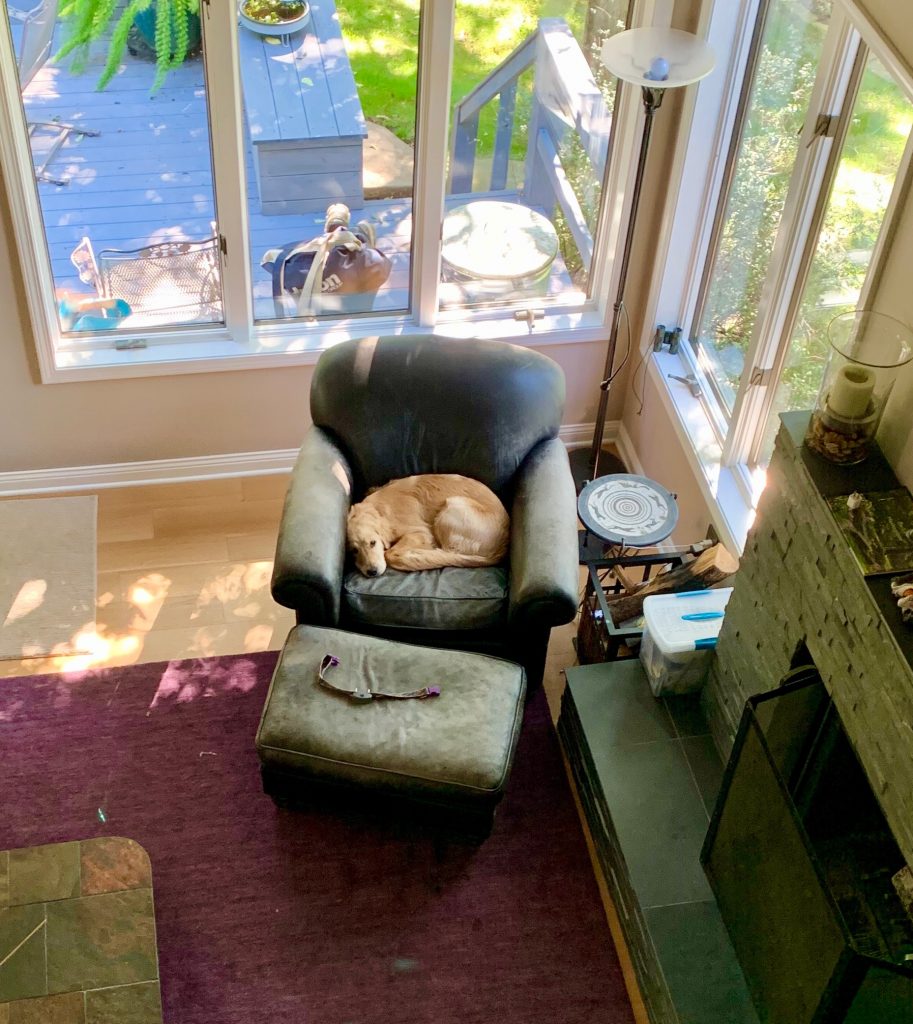While visiting Paul Bandelier this week, he showed me the original home his ancestors built when they came to the U.S. from Switzerland (circa 1867).
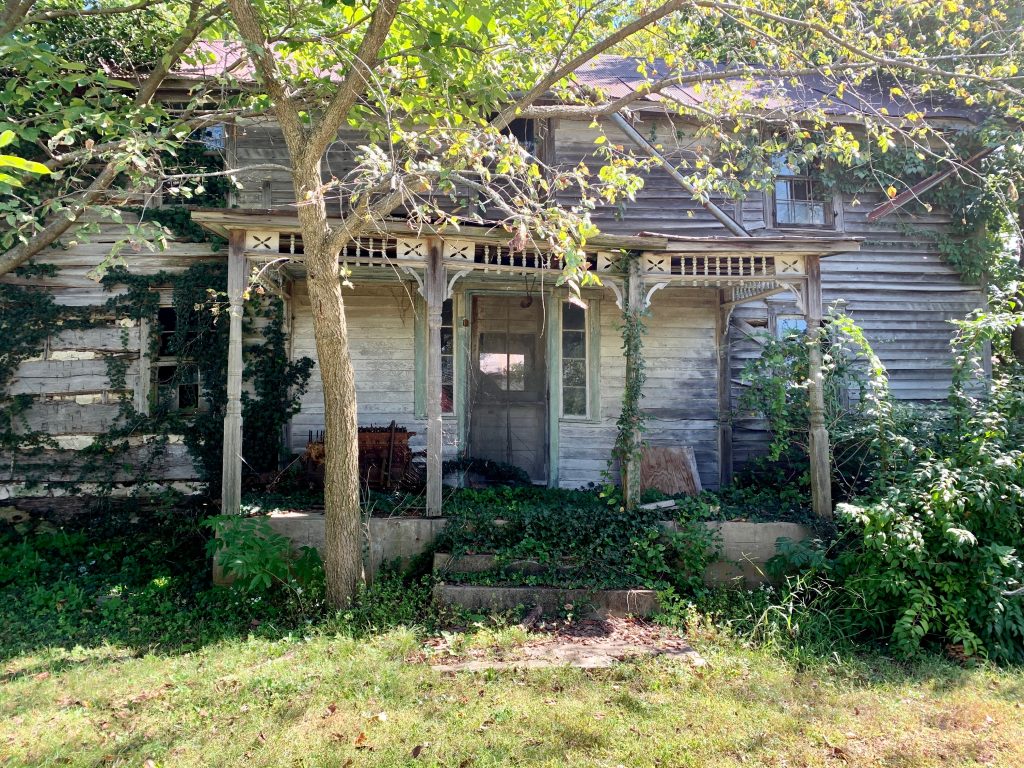
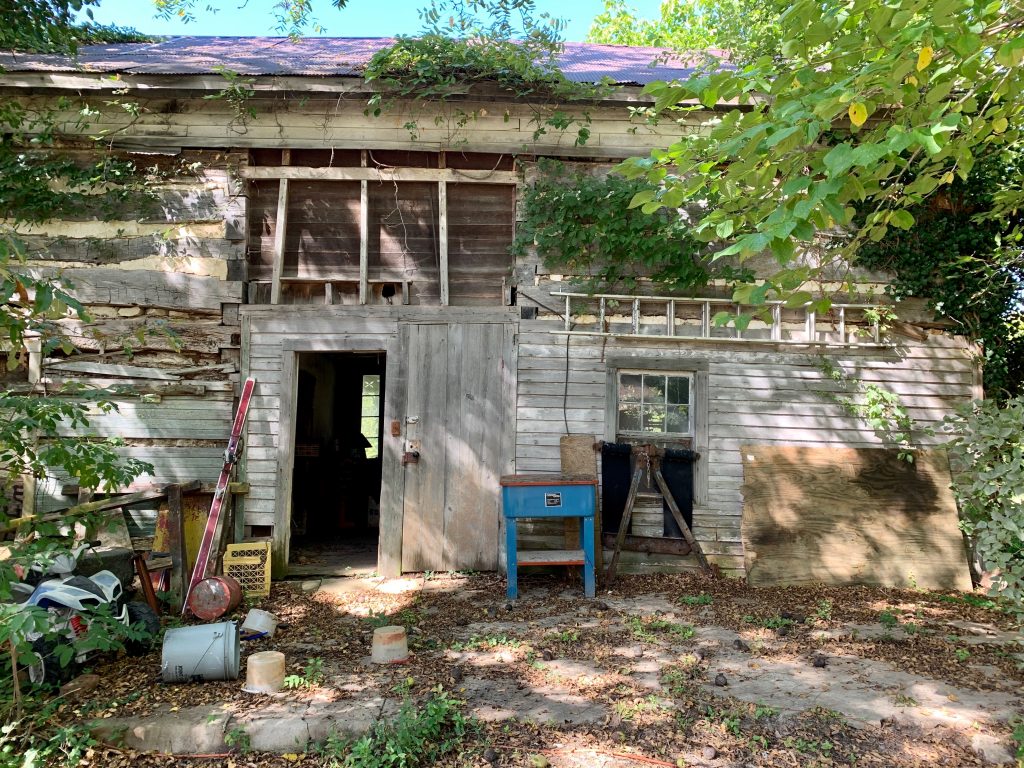
The top photo is the front of the structure, the bottom the rear. Paul explained it was built as two log cabins with the entryway between. I’ve asked Paul for more information and will update post.
“Can a Burger Help Solve Climate Change?”
The September 30 issue of New Yorker Magazine includes the best article I’ve read on this topic. Staff writer Tad Friend spent six months reporting the piece which runs 12,000+ words (about 35 pages). I don’t know many with the attention span to read something of that length so here are a few excerpts I found interesting.
The piece focuses on Pat Brown, “a sixty-five-year-old emeritus professor of biochemistry at Stanford University and the founder and C.E.O. of Impossible Foods. By developing plant-based beef, chicken, pork, lamb, dairy, and fish, he intends to wipe out all animal agriculture and deep-sea fishing by 2035.”
- Agriculture consumes more freshwater than any other human activity, and nearly a third of that water is devoted to raising livestock. One-third of the world’s arable land is used to grow feed for livestock, which are responsible for 14.5 per cent of global greenhouse-gas emissions.
- Because methane is a powerful greenhouse gas, some twenty-five times more heat-trapping than carbon dioxide, cattle are responsible for two-thirds of the livestock sector’s G.H.G. emissions. Every four pounds of beef you eat contributes to as much global warming as flying from New York to London—and the average American eats that much each month.
- the Impossible Burger requires eighty-seven per cent less water and ninety-six per cent less land than a cowburger, and its production generates eighty-nine per cent less G.H.G. emissions. They made it nutritionally equal to or superior to beef.
- Ninety-five per cent of those who buy the Impossible Burger are meat-eaters.
- The three largest meatpacking companies in America have combined annual revenues of more than two hundred billion dollars.
- Researchers at the University of Minnesota found fecal matter in sixty-nine per cent of pork and ninety-two per cent of poultry; Consumer Reports found it in a hundred per cent of ground beef.
- Cooked beef contains at least four thousand different molecules, of which about a hundred contribute to its aroma and flavor and two dozen contribute to its appearance and texture.
- at least ninety-five per cent of American beef cattle spend their last four to six months being fattened on grain at feedlots.
- American broilers, chickens raised for meat, are bred and confined in ways that make them more than four times larger than broilers were in the nineteen-sixties; as a result, they often collapse from their own weight.
Riley in the reading chair
Country vs. Pop
In one of the episodes of Ken Burns’ series on the history of country music, they trace the shift from country to pop music. I believe it was in the early 50’s. My father, John Mays, would have been at KBOA for several years by then and he had a better feel (and preference) for pop than country so he played that music while other announcers played different types. Rudy Pylant (Mr. Rudy) was known for Old Camp Meetin’ Time which was country gospel and “old time” music. Jimmy Haggett was — during this period — known as the country DJ.
The photo below was the result of a “popularity” contest in which listeners voted with 3-cent postcards.
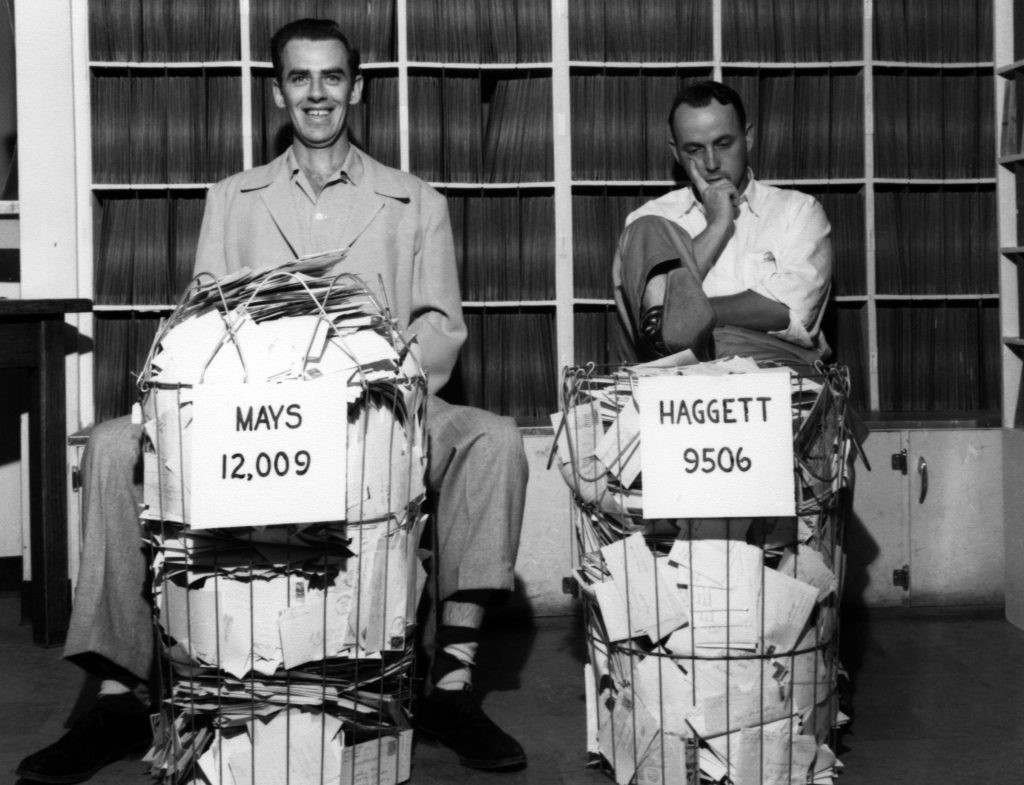
This must have been an incredibly exciting time to be in radio, even at a small market station like KBOA. Nashville station WSM (home of the Grand Ole Opry) was featured prominently in the Burns documentary Haggett worked there at some point after leaving KBOA.
Country Music | A Film by Ken Burns
The Weight
I never tire of these. The face of each performer radiates joy.
Universal Driving Gestures
 As soon as I started driving my old Land Rover around town I started getting the “thumbs up” gesture from other drivers. Almost always with a smile. This gesture is clearly meant to convey something positive. They like/admire the Rover. Wikipedia has a page on the history of the gesture. I love getting the thumbs up and started wondering why there are not more universally (at least in English speaking countries) recognized gestures between motorists. The only other one I can think of is The Finger. The other end of the approval spectrum, if you will.
As soon as I started driving my old Land Rover around town I started getting the “thumbs up” gesture from other drivers. Almost always with a smile. This gesture is clearly meant to convey something positive. They like/admire the Rover. Wikipedia has a page on the history of the gesture. I love getting the thumbs up and started wondering why there are not more universally (at least in English speaking countries) recognized gestures between motorists. The only other one I can think of is The Finger. The other end of the approval spectrum, if you will.
Land Rover hardtop back on
Doesn’t seem that long ago (April 29) we took the hardtop off the Land Rover and replaced it with the soft-top. We carefully stowed the hardtop in a storage unit where not quite a month later a tornado banged the shit out of it (and a bunch of other stuff in Jefferson City). More photos.
It’s still warm enough for the soft-top but the mornings are getting cool so I decided to put the hardtop back on and today some pals showed up to help.
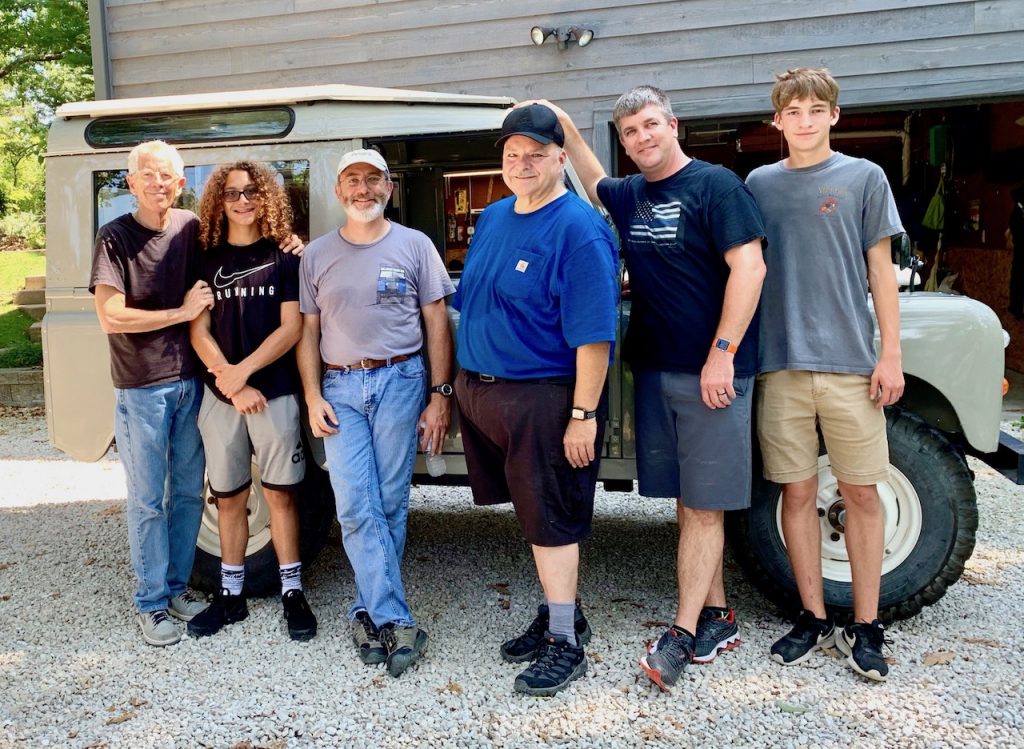
L-R: Me, Benjamin and John Middleton, George Kopp, Andrew and Ben Lear.
Traveling Vintage Bus Mechanic
My friend George has a thing for old buses. He has two, one in better shape than the other. But both need work and they are not the sort of vehicles you can put on a trailer and take to the shop. So George called the “Bus Grease Monkey.“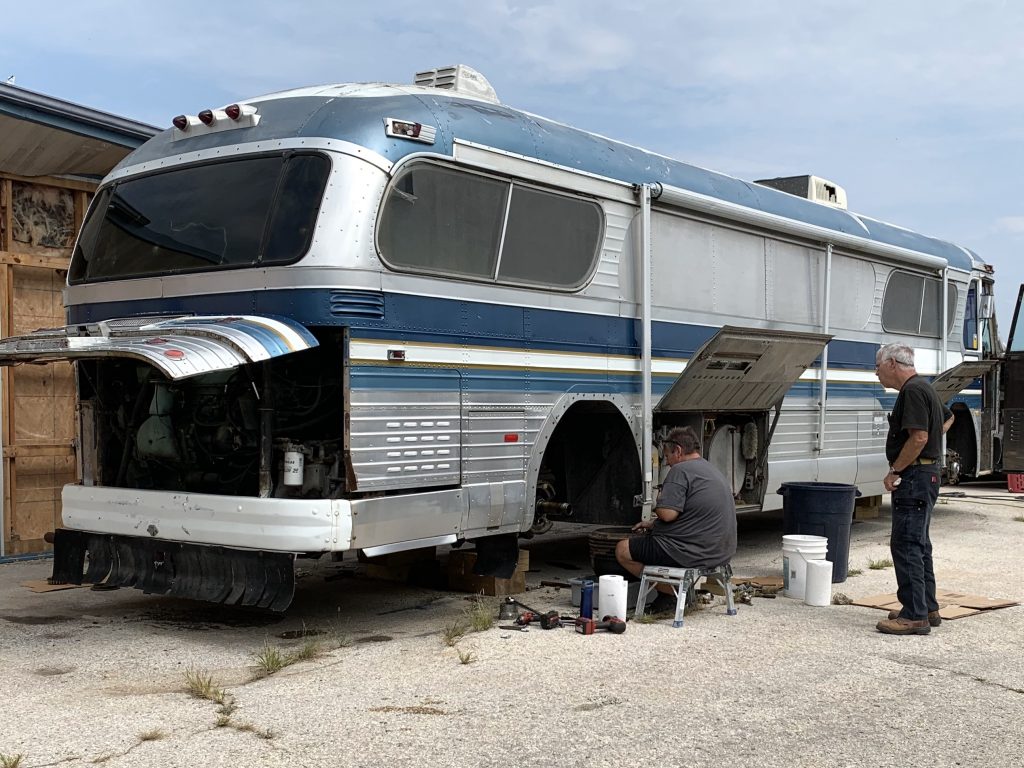 Scott travels all over the country, working on old buses. Appropriately, he travels in an old bus (below). Don’t miss his “How I got in this business” video.
Scott travels all over the country, working on old buses. Appropriately, he travels in an old bus (below). Don’t miss his “How I got in this business” video.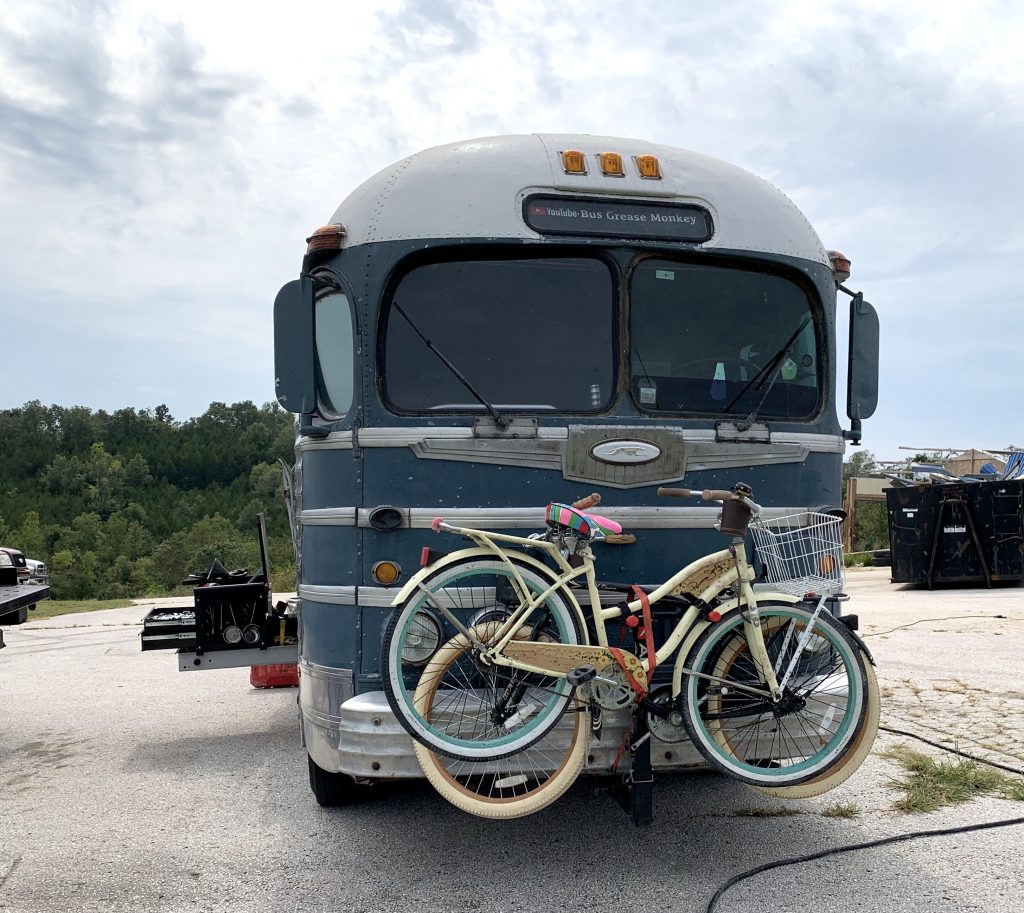
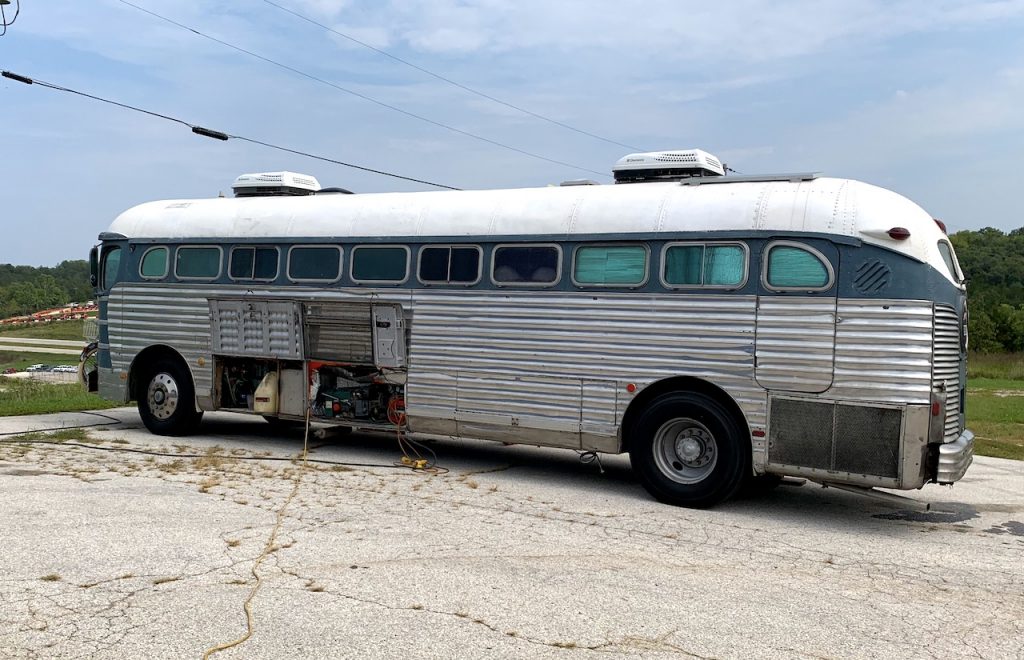 During the time I watched they were working on a wheel. Lots of phone calls trying to find parts for these ancient beasts. And everything is heavy.
During the time I watched they were working on a wheel. Lots of phone calls trying to find parts for these ancient beasts. And everything is heavy.
I’m old enough to remember when a Greyhound or Trailways bus was a pretty nice way to get somewhere in a time before every man, woman and child had their own car. There are still a lot of these old buses out there. According to traveling bus mechanic, they built them really well until someone figured out they could sell more buses if they engineered in some planned obsolescence.
Update: Okay, I find this amazing. Scott has a very $ucce$ful YouTube channel. And after working his ass off yesterday in the mid-Missouri heat, he uploaded a couple of videos recounting the work he did on George’s video. And I think he was taking question live while streaming the video! Which is very detail and runs 30 minutes. This, my friends, is how you build a huge YouTube audience.

